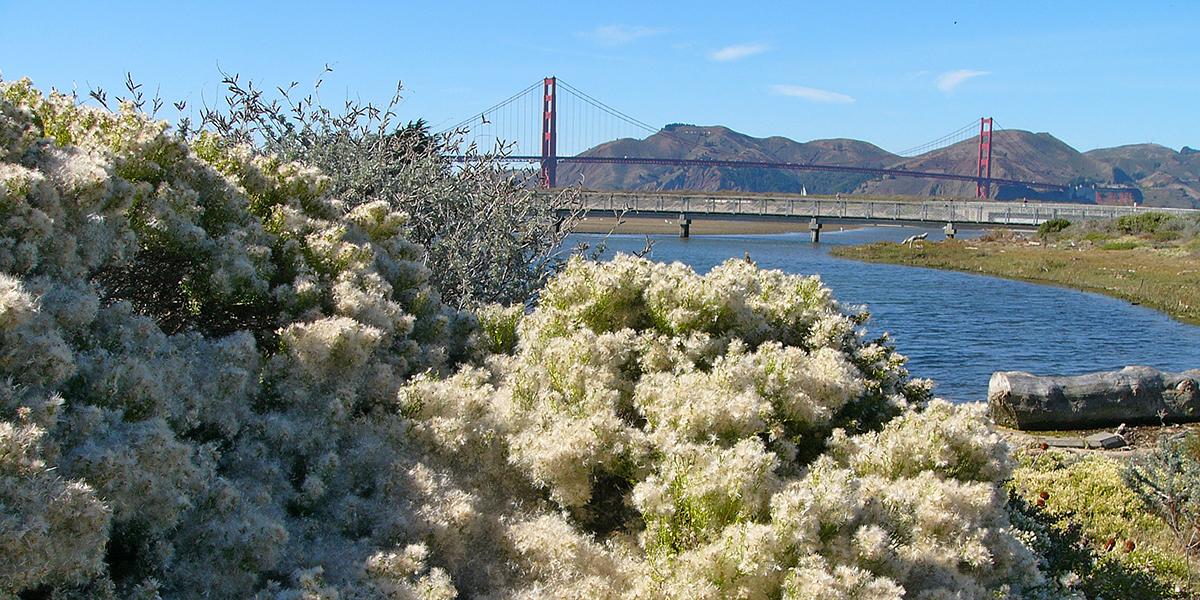Your parks need you now
Your support helps fight climate change and promote park sustainability—please give now.

While autumn may bring to mind the jaw-dropping beauty of changing leaves in New England and the Pacific Northwest, a discerning eye can find vibrant red, orange, and yellow foliage locally in the Golden Gate National Recreation Area.
As the temperature begins to drop here in the Bay Area, many native plant species show their beauty through their leaves, bark, or fruits. Sometimes the seeds themselves are the reminders that we are approaching year’s end. Scrub jays, squirrels, and chipmunks, for instance, prepare for the winter months by catching of those very same seeds.
The next time you are hiking through the coastal scrub or the riparian habitat, be sure to seek out these gorgeous displays of fall’s flaxen hues happening in your local national parks:
Big Leaf Maple (Acer macrophyllum)
Like other deciduous trees, this native is a show-stopper when its leaves turn bright yellow. It is found along riparian areas.
California Buckeye (Aesculus californica)
This gorgeous tree looks like Mother Nature hung ornaments on its bare branches. When the leaves drop, large brown seeds are the only thing left hanging on the buckeye.
Creek Dogwood (Cornus sericea)
As the common name suggests, creek dogwood can be found in the Golden Gate National Parks’ riparian areas. The species makes its presence known as its leaves drop, showcasing bright red branches underneath.
Poison Oak (Toxicodendron diversilobum)
While best viewed from a distance, this species offers a dramatic display of fall colors. Vibrant reds, purples, oranges, and yellows announce the change of seasons. Viewer beware—the plant retains its itch-inducing oils even without its leaves.
Coast Live Oak (Quercus agrifolia)
While many other species of oaks in California are deciduous (they lose their leaves), the coast live oak is evergreen. Watch as acorns mature (usually from September to November) before dropping.
Coyote Bush (Baccharis pilularis)
A prominent species in the coastal scrub landscape, coyote bush reveals why it is named after the trickster canine in the fall. When the seed clusters of the plant open, they expose a crown of white hairs that resemble the fur of a coyote. These fine hairs are technically known as “pappus” and allow the attached “achene” (seed) to disperse by wind.
If you want to go a step beyond just viewing the fall foliage, we have habitat restoration volunteer opportunities that are perfect for this autumn season. Regardless of your intention, we hope you enjoy the fall harvest season in your backyard!
Your support helps fight climate change and promote park sustainability—please give now.